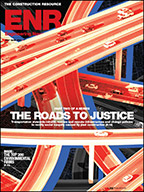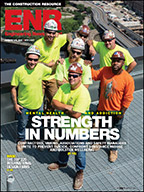“One of the goals of the National Levee Database is to make as much information available to as many people as humanly possible. That goes to the whole concept of shared responsibility. In order for all of us to collectively manage that risk as best we can, we have to have as much material available as possible.”
Currently the NLD includes information on more than 14,700 miles of levees systems that are associated with USACE programs.
“It is a useful tool for a variety of public agencies and individuals including flood plain managers, emergency management agencies, levee system sponsors and citizens,” says Halpin. “Because we have information on the physical location and size of levees, we can model to show where potential floods will go on long-range projections for flows and outflows. We can also predict flood crests and see how we could flood fight events at low points of levees.”
Last spring's epic flood fight floodways in the Mississippi River & Tributaries System—during which all three of the system's floodways were used—offers examples of the value of the data. Using it, the Corps was able to predict “with high degree of accuracy” where inundation would occur, Halpin says.
“Using smart phones with photos tagged back to NLD, we were able to track better than ever before where the flooding was. We were also able to communicate what was going on quicker and, post flood, able to assess needs in a much more useful way.”
The NLD will constantly change as new information is added and capabilities improve. The main sources of updates will be routine, annual inspections; periodic inspections (five-year cycle); risk assessments (five- to 10-year basis) and flood events that generate new data. “Because we now have apps like smart phone apps, we expect we will get an almost continuous stream of data that is valuable to us,” Halpin says.
The Corps expects data collection by its contractors to be complete soon, so its full portfolio of levees will be in the NLD early next year. However, the Corps portfolio represents only a fraction of the nation’s estimated 100,000 miles of levees. The Corps is not authorized to collect data on levees not in its jurisdiction.
Local and state authorities may submit data, and many have indicated that they would like to include their levees in the NLD, Halpin says. However, without establishment of a national levee safety program, state and local officials say they don’t have the funds to compile the data.
The NLD will be interactive and dynamic. In addition to the various options for viewing information in map or report form, the NLD includes geospatial models. Levees cover large areas and are good candidates for geospatial mapping.




Post a comment to this article
Report Abusive Comment